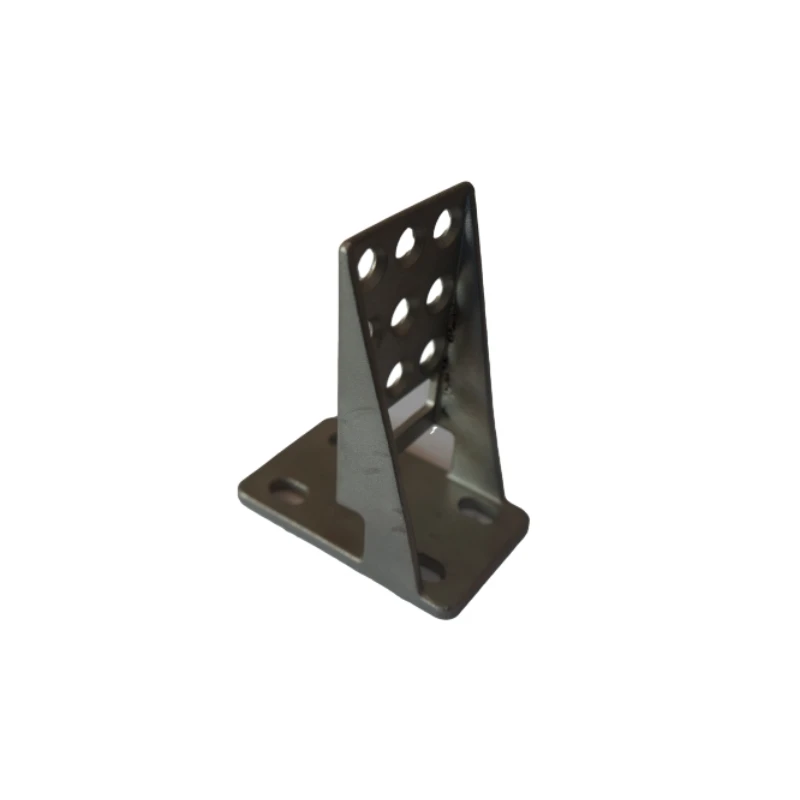sand casting manufacturer
The Evolution and Importance of Sand Casting in Modern Manufacturing
Sand casting is one of the most widely used manufacturing processes for producing metal parts. With a history that spans thousands of years, this method has evolved significantly, yet it remains a cornerstone of modern manufacturing, catering to various industries, including automotive, aerospace, and art. This article explores the importance of sand casting manufacturers, the process itself, its advantages, and its challenges.
What is Sand Casting?
Sand casting is a metal casting process characterized by the use of sand as the mold material. In this process, a pattern is created based on the desired shape of the final product. This pattern is typically made of metal, plastic, or wood. The pattern is then placed in a mold box, and sand mixed with a binder is packed around it to create a mold. Once the mold is created, the pattern is removed, and molten metal is poured into the resulting cavity. After the metal cools and solidifies, the mold is broken away to reveal the finished part.
The Role of Sand Casting Manufacturers
Sand casting manufacturers play a critical role in the supply chain for various industries. They create casting molds and produce components crucial for machinery, turbines, engines, and much more. These manufacturers leverage state-of-the-art machinery and technology, including computer-aided design (CAD) and computer-aided manufacturing (CAM), to enhance precision and efficiency in their operations.
Moreover, sand casting manufacturers need to stay updated with industry standards and quality regulations
. They often obtain certifications to ensure their products meet specific specifications for performance and safety. The importance of these manufacturers cannot be overstated, as they contribute significantly to the functionality and reliability of numerous products that consumers and industries rely on daily.Advantages of Sand Casting
sand casting manufacturer

One of the primary advantages of sand casting is its versatility. It can be used to cast a wide variety of metals, including aluminum, iron, and bronze. This flexibility makes sand casting an attractive option for manufacturers of all kinds. Additionally, the sand casting process can produce large parts and complex geometries that may be difficult or impossible to achieve using other casting methods.
Another key advantage is cost-effectiveness. Sand casting requires relatively low initial investment and can be particularly economical for small production runs, making it an appealing option for prototypes and custom pieces. Moreover, the sand used in the casting process can be reused multiple times, further reducing material costs and waste.
Challenges in Sand Casting
Despite its advantages, sand casting manufacturers face several challenges. One significant issue is the quality control associated with the casting process. Variations in sand composition, moisture levels, and packing density can lead to defects in the finished product. Manufacturers must implement stringent quality control measures to monitor these variables, ensuring that the final castings meet strict standards.
Additionally, while sand casting is effective for many applications, it has its limitations in terms of surface finish and dimensional accuracy compared to other methods like investment casting or die casting. Manufacturers must find a balance between the simplicity of sand casting and the requirements of their clients, sometimes investing in post-processing techniques to improve the final product's quality.
The Future of Sand Casting
Looking forward, sand casting continues to adapt and innovate. Advances in technology, such as 3D printing, are beginning to influence traditional sand casting practices. Manufacturers are now experimenting with 3D-printed molds, which can significantly reduce lead times and costs while enhancing design freedom.
In conclusion, sand casting remains a vital manufacturing technique that offers numerous benefits to various industries. As technology progresses, sand casting manufacturers are well-positioned to leverage new methods and materials, ensuring they can meet the growing demands of the market while maintaining the quality and reliability that their clients expect. The future of sand casting is bright, and its enduring legacy in the manufacturing world is a testament to its effectiveness and versatility.
-
Precision Casting Prototypes and Engineering Inc – Innovating Global Manufacturing SolutionsNewsNov.24,2025
-
Precision Casting Facility: Advanced Manufacturing for Global Industries | Hairun SourcingNewsNov.23,2025
-
Leading Precision Casting Corporation: Quality Metal Components for Global IndustryNewsNov.23,2025
-
Precision Cast Rods: Definition, Applications & Future Trends in ManufacturingNewsNov.22,2025
-
Precision Cast Iron Surface Plate: The Backbone of Industrial Accuracy and QualityNewsNov.21,2025
-
Precision Aluminum Investment Casting: High-Accuracy Manufacturing for Modern IndustriesNewsNov.20,2025















